.jpg)
Formula 1 engine "TAG Turbo PO1"
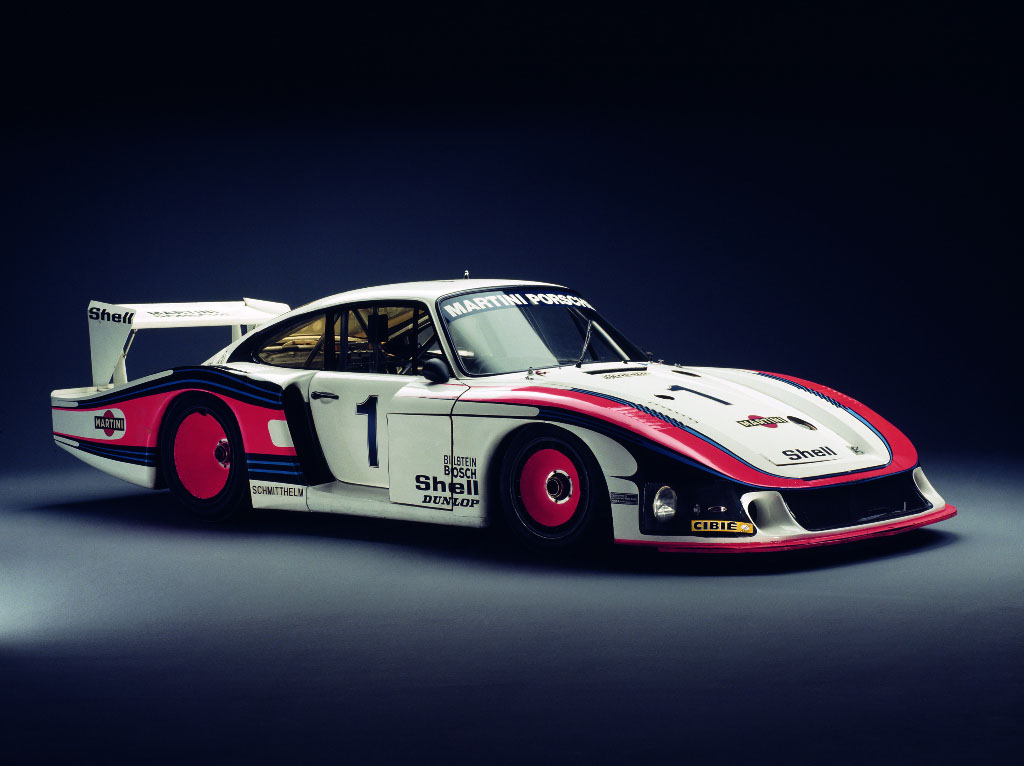
Forty years of the Porsche 911 also means 40 years of the flat-six power unit fitted consistently at the rear end of this outstanding sports car. With the engine of the first 911 code-named 901/01 being enlarged and optimised for many years, the basic design and configuration of the engine always remained unchanged. New engine generations were only introduced many years later, for example in the '90s the water-cooled 3.4 and, respectively, 3.6-litre six-cylinders in the current 911. Following the early years with engine output appearing to be quite modest from today's perspective, the output of the 911 power units has grown into impressive dimensions in the meantime: Engine output in the first 911 was 130 bhp rising up to the staggering power of the Porsche 935 Moby Dick racing car built in 1978. The turbocharged 3.2-litre six-cylinder with four overhead camshafts featured in this impressive machine developed an incredible 845 bhp. This was indeed the first 911 engine in history to boast watercooled cylinder heads with four valves per cylinder, the cylinders themselves remaining aircooled.
Focusing on the engine of the first 911, Professor Ferry Porsche himself voiced clear requirements right from the start: The engine was to combine the power and performance of the two-litre Carrera engine (130 bhp) featured in the 356 with the acknowledged smoothness and refinement of the weakest 60-bhp version in the 356 series. With the Carrera four-cylinder being too elaborate in design and too loud with its vertical engine shafts, Ferry Porsche opted for a six-cylinder with overhead camshafts. Six cylinders were intended to improve running smoothness and refinement, the new arrangement of the camshafts was to ensure high engine speeds of up to 6100 rpm. The engine block and cylinder heads were made of light alloy. Displacement of the 901/01 was two litres, engine weight including the clutch being 184 kg or 406 lb. Maximum output was 130 bhp, that is the same as on the fourcylinder Carrera engine of the 356. This kind of power from two litres set a new benchmark in 1963 and would not even look bad today in the data sheets of some quite dynamic series production cars.
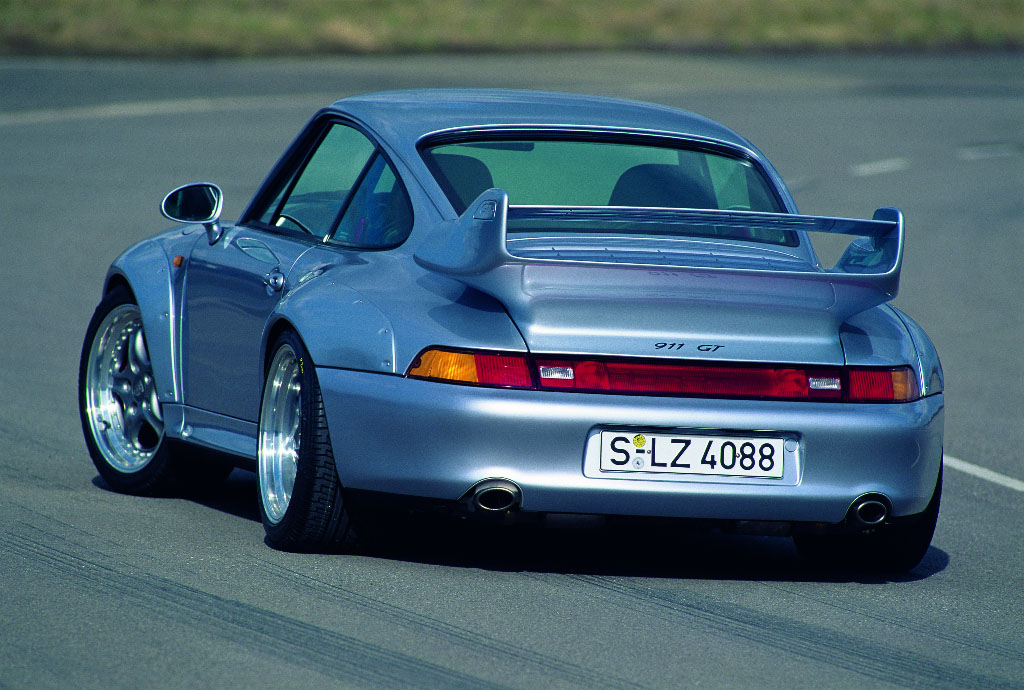
Forty years ago, however, this was only the beginning. Since then the engine has grown in every respect, capacity, output, torque and engine speed rapidly increasing. And indeed, the option to enlarge the engine to 2.7 litres was taken into account from the very beginning.
In hindsight, however, Ferry Porsche once said that “had I known in 1960 that there was the option to enlarge the engine to even three litres and beyond, I would certainly have said that the engine was too big and heavy. Which means I would have told my engineers to make it smaller. So the good news is that I didn't have that information back then!"
The design of the car goes back to Ferdinand Alexander Porsche, the eldest son of Ferry Porsche, at the time the President and Chief Executive Officer of the Company. A 25-year old designer back in those days, F. A. Porsche warmly remembers the great task of creating a successor to the Porsche 356: “The job was not to simply design some kind of new car within a large model range. No – this was to be the successor to a car which itself had become a classic after more than 1 1/2 decades in the market." So he himself describes the 911 as a sports car with a clear and honest form, stating just as clearly that “a good product must be discreet in its good looks. Design is not fashion".
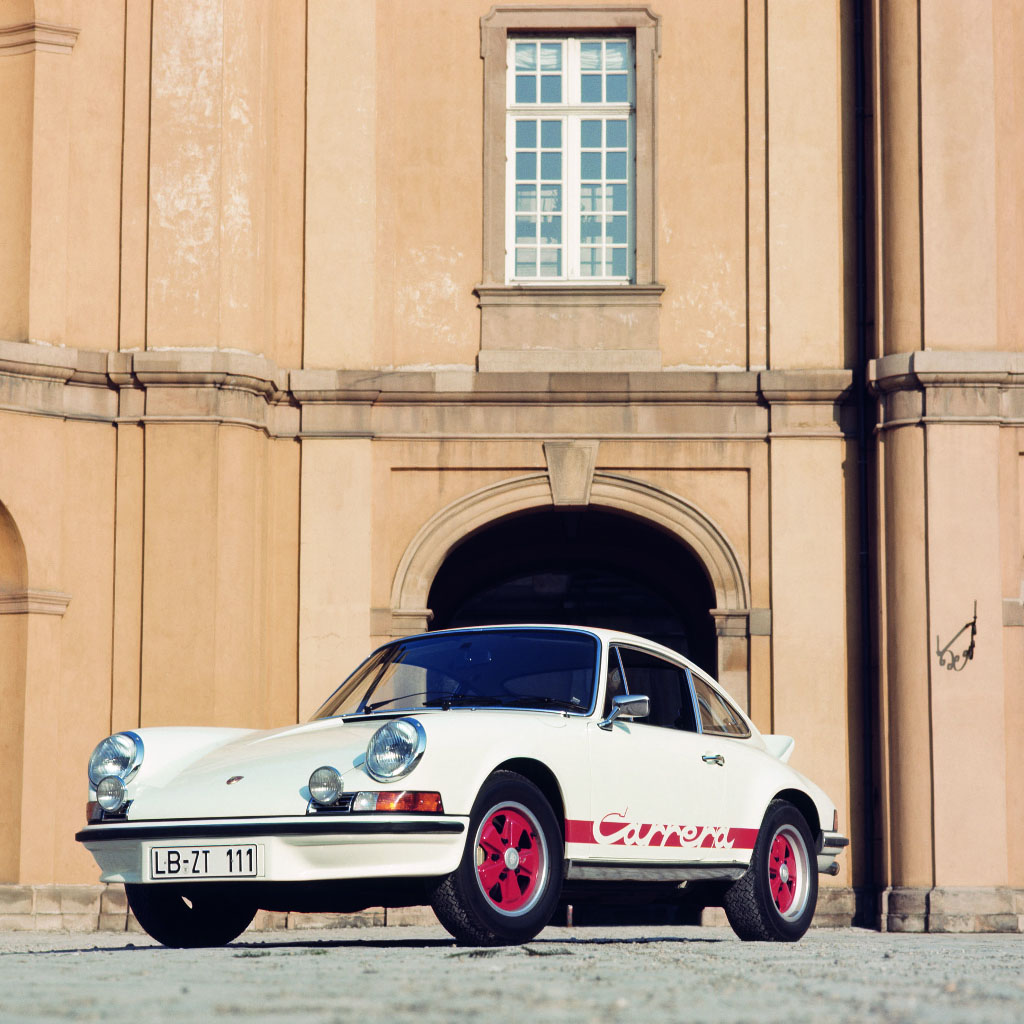
The first example of this evolution is the racing version of the two-litre power unit developing 210 reliable horsepower in the Porsche 904 way back in 1965. Benefitting from this experience, Porsche's engineers quickly realised that they could also increase the power of the series engine without having to fear any problems. A higher compression ratio, new cams, larger valves and ducts, different Weber carburettors, and improved heat exchangers soon culminated in the first 911 S launched in 1966: Maximum output was 160 bhp at 6600 rpm, replacement of the carburettors in 1968 by Bosch fuel injection increasing engine power to 170 bhp at 6800 rpm. These two-litre injection engines only remained in production for one year, however, cylinder bore being increased again in August 1969, growing from 1991 to 2195 cc. Now maximum output of the 911 S was 180 bhp at 6500 rpm.
Facing stricter emission regulations in 1971, Porsche was not willing to make any concessions in terms of engine power. But this was only possible by further increasing the size of the engine, the decision taken this time being not to increase engine bore, but rather piston stroke. The result was 2.4 litres capacity with an appropriate decrease in compression allowing even the 911 S to run on regular fuel with its output of 190 bhp at 6500 rpm. And it is easy to imagine, of course, how surprised attendants at the filling pump were when the new cars came in for “regular"!
Towards the end of 1972 Porsche presented a new model developed primarily with the focus on motorsport: the Carrera RS 2.7, a sports car unforgotten to this day also because of its characteristic “ducktail", a feature quite unique at the time. Up to that point company policy had been to keep all engines in the 911, even the racing units, within the 2500-cc capacity limit. But now engine bore was enlarged once again, increasing displacement to 2687 cc and with maximum output of 210 bhp at 6300 rpm. Upon the introduction of the “G Series" in August 1973 all 911s featured an engine of this size, albeit with reduced output of 150 bhp in the 911 and 175 bhp in the 911 S, production of the Carrera engine continuing without any changes.
Entering the year 1975, the three-litre power unit of the Carrera 3.0 started out with 200 bhp. All engines in the 911 series were now equipped with K-Jetronic, a modern fuel injection system at the time combining greater economy with enhanced flexibility and cleaner emissions. A bigger step followed in 1983 with the introduction of the Carrera 3.2 developing 231 bhp at 5900 rpm, although engine output then dropped with the introduction of the catalytic converter to 207 bhp, rising again to 217 bhp as of the 1987 model year.
A drastic change came in 1988 with the engine in the new 964 model, comprising a wide range of modifications such as the introduction of dual ignition and a new crankshaft. Porsche's engineers also enlarged engine bore and stroke, engine capacity of 3600 cc allowing the classic six-cylinder (with the same distance between cylinders as on the two-litre) to develop an impressive 250 bhp at 6100 rpm. In the 911 Carrera (993 model series) engine output increased initially to 272 and finally to 285 bhp, the RS 3.8 offering an even more powerful 300 bhp. This marked the end of an engine generation which had entered the market back in 1963 with 130 bhp.
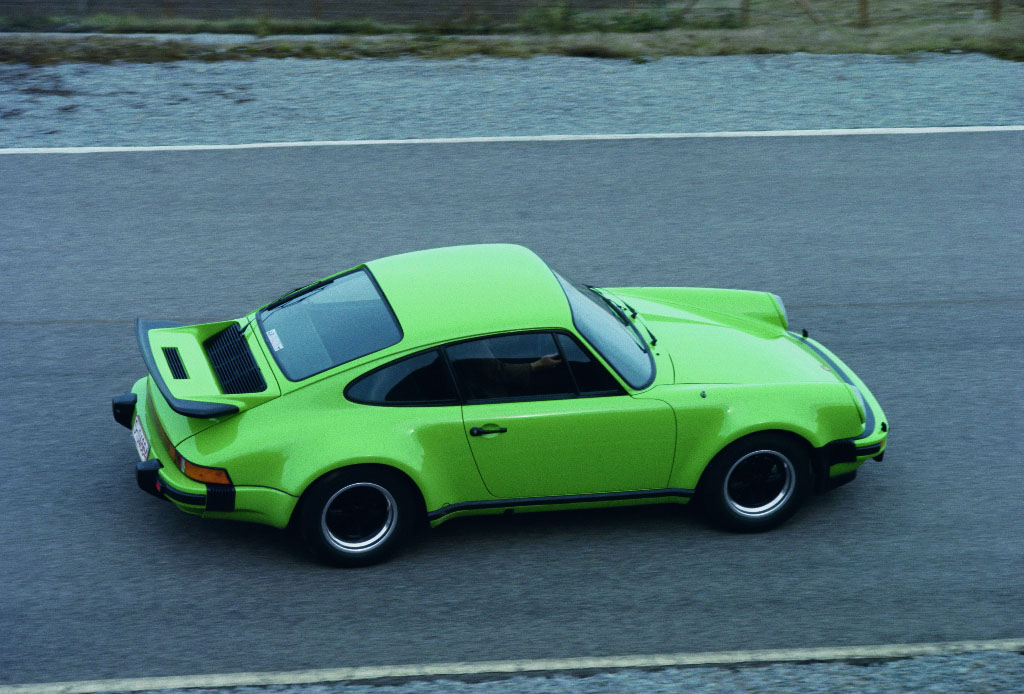
There is a simple reason why Porsche for many years focused more on the economic qualities than on the power and performance of the 911 engine: there was already more power available in the range. The 911 Turbo 3.0 made its debut in 1974, right in the middle of the energy crisis. The boosted power unit featured in this model delivered unbelievable output at the time of 260 bhp at just 5500 rpm. The positive impact of motorsport on series production was indeed rarely as clear as in the development of this turbocharged power unit.
Porsche had already gained experience with turbocharged 12-cylinder power units in the 917/10 and 917/30, Porsche prototypes developing more than 1000 bhp dominating the CanAm Series in 1972 and 1973. The 911 Turbo 3.0 was the first production car to offer an increase in output with the help of an exhaust gas turbocharger.
In 1977 turbo technology was supplemented by intercooling increasing air density while pressure remained unchanged. The result is a greater supply of oxygen with the same air volume allowing an increase in the amount of fuel injected. Benefitting from this technology and from an increase in engine capacity to 3.3 litres, output of the new 911 Turbo 3.3 increased to 300 bhp at 5500 rpm.
The next step taken in 1990 was to enlarge the intercooler, increasing output to 320 bhp at 5750 rpm. Entering the 1993 model year, the Turbo 3.6 developing 360 bhp at 5500 rpm appeared on the scene in the guise of the 964 model. As usual, the flat-six power unit of the 911 Turbo in the subsequent 993 series was based on the air-cooled 3.6-litre engine of the 911 Carrera now developing 408 bhp at 5750 rpm with the help of two turbochargers.
Porsche's next step in 1998 was to develop a new power unit for the Porsche Carrera now bearing the internal 996 code number, only the basic principle of the flat-six remaining unchanged. The striking difference was – and is – that this 3.4-litre power unit initially developing 300 bhp at 6800 rpm is water-cooled. With the conventional fan for air cooling no longer being required, there was now space for an additional parcel shelf or, alternatively , for the soft roof folding down behind the rear seats. The reason for the introduction of water cooling was the need to ensure optimum cooling of the four valves on each cylinder, to maximise the energy delivered by the fuel available, and to fulfil all worldwide emission standards also in future. Interesting technical features introduced for this purpose are the intake camshafts adjustable as a function of engine speed and referred to initially as Variocam, later as Variocam-Plus: At low engine speeds the change in valve timing reduces exhaust emissions and stabilises the engine's idling qualities. At higher speeds, in turn, the system helps the engine to build up maximum power. Entering the 2002 model year, this engine was fundamentally updated once again, being enlarged to 3.6 litres by increasing the piston stroke.
The power units currently featured in the Porsche Turbo (420 bhp), GT 3 (381 bhp), and GT2 (462 bhp), each displacing 3600 cc, are not based exclusively on the Carrera engine. Rather, their starting point in technical terms is the water-cooled power unit of the Porsche 911 GT1, the winner of the 1998 24 Hours of Le Mans. The engine of the GT3 even comes with separate cylinder and crankshaft housings as well as cylinder heads made of a high temperature-resistant light alloy. The titanium connecting rods also come from the power unit of the GT1.
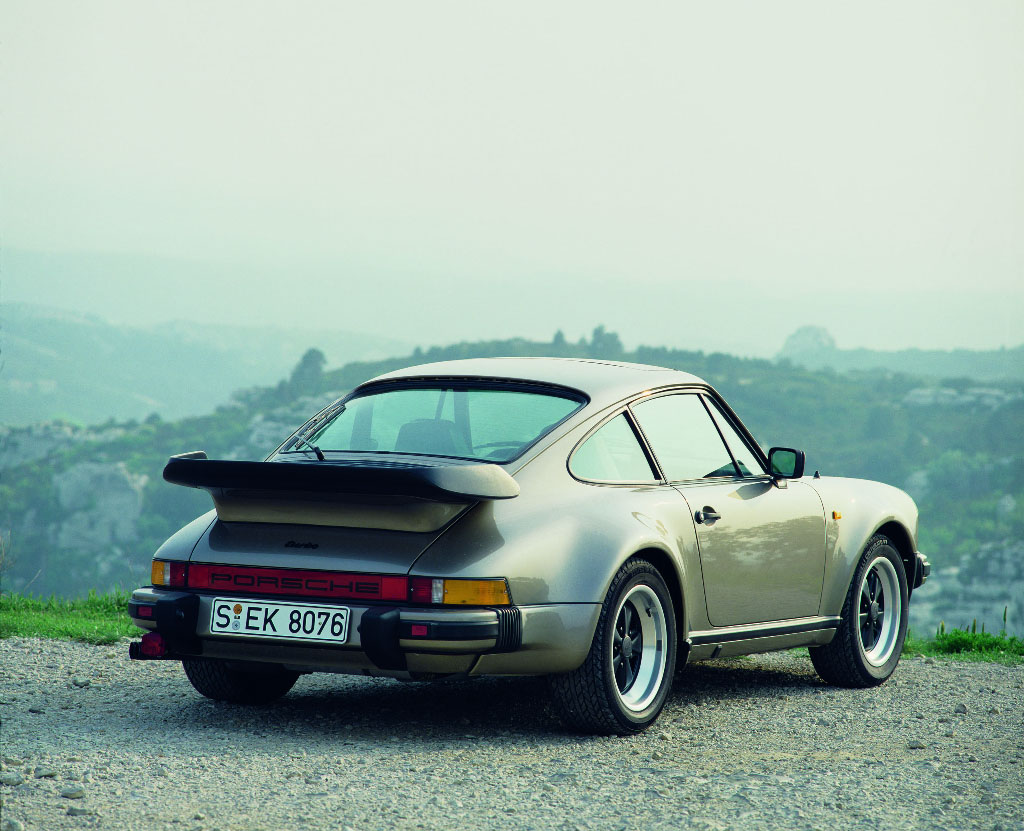
Forty years of the 911 also mean 40 years of racing engines based on the 911 six-cylinder. During this period the power unit has been modified numerous times in accordance with a host of different rules and regulations, spanning a broad range from the 210 bhp two-litre in 1965 all the way to the 845 bhp turbocharged engine mind-blower in the 1978 Moby Dick version of the 935.
.jpg)
Formula 1 engine "TAG Turbo PO1"
.jpg)
Indy-CART 8-cylinder racing engine

Porsche Press kit

Porsche Literature

Our Porsche Cars